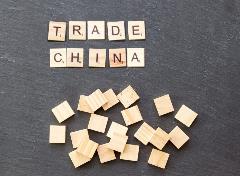The word “tariffs” has been in the media a lot lately. What, exactly, are tariffs? In essence, a tariff is a tax on a country’s imports or exports.

Once upon a tariff
The United States has a long history of using tariffs to manage trade negotiations. The first U.S. tariff, the Tariff of 1789, was levied shortly after the Constitution was ratified. This tariff was used by the young nation to generate revenue for the government to pay off war debts and protect start-up companies. Tariffs actually were the main source of revenue for the U.S. government from 1790 to 1914.
Some people believe tariffs caused the Great Depression. Although the Smoot-Hawley Tariff Act of 1930 did not cause the Great Depression, it definitely contributed. The Act resulted in reciprocal tariffs by U.S. trading partners – Canada, the United Kingdom, France and Germany – which caused imports and exports to decline. President Franklin D. Roosevelt unwound the tariffs when he came into office, but foreign trade was slow to reverse course.
Most economic historians doubt the Act played a significant role in the contraction of global GDP. Instead, they believe excessively loose credit caused the panic and depression, which was exacerbated by the collapse of international liquidity. Sound familiar? It should. Excessively loose credit and speculative real estate led to the housing bubble of the early- to mid-2000s, which ultimately led to the Great Recession of 2008/2009.
The modern tariff
But, what do tariffs have to do with consumers and credit unions? Tariffs can be used to balance both perceived and real trade differences among nations. The current President’s administration has imposed tariffs on the largest U.S. trading partners (European Union, Canada and Mexico) on such items as solar panels and washing machines (30 to 50 percent), steel (25 percent) and aluminum (10 percent). China was hit with 25 percent tariffs on approximately 800 categories of goods, worth about $50 billion.
Tariffs usually cause the affected nation to retaliate with their own tariffs on the opposing country’s imports. Sometimes tariffs bring nations to the table to negotiate and make modifications, such as the incremental modernizations recently made to NAFTA. But many times, they cause protracted negotiations, like those the U.S. is currently experiencing with China. The longer a trade war draws out, the greater the chance the binary game becomes a zero-sum game where both nations lose.
An import tariff taxes consumers and businesses using that good or commodity. Taxes on steel or oil, for example, result in cost increases for all products downstream that use those commodities. Consider how many products use steel or oil in any aspect of their production. The economic impact of tariffs on everyday business and consumption is pervasive.
And eventually, increases in prices lead to increases in inflation, which can lead the Federal Reserve to raise interest rates to slow inflation, ultimately lowering borrowings and consumption. This could result in a stronger dollar. Or, other nations could let their own currency drift lower, negating the initial tariff imposed. Thus, companies exporting to the United States would be less damaged, while companies in the States that export would be hurt by the stronger dollar.
The key takeaway is that tariffs affect the national and global economies. Yes, they can raise revenue, create more jobs domestically or alter current trade pacts. However, in a global economy, negative effects can cascade worldwide. A deft touch is needed to negotiate tariffs for a perceived win/win environment that actually favors the host nation.
For additional relevant commentary on national and global economic events, check out Catalyst Corporate's "Behind the Numbers," a collection of resources tailored to credit union interests.